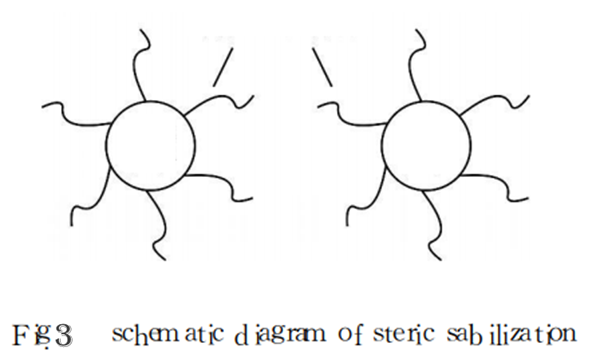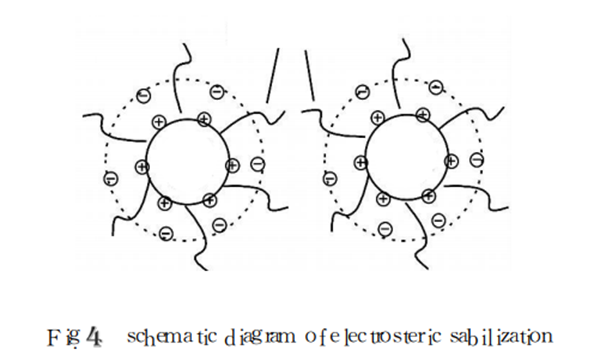- Home
- Products
- Elementary
- Boride Powder
- 3D Printing Powder
- Sulfide Powder
- Oxide Powder
- Carbide powder
- Nitride Powder
- Silicide Powder
- Hydride Powder
- Telluride Powder
- Selenide Powder
- Stearic Acid Series
- Phosphide Powder
- Nanoparticles
- Metal Alloy
- MAX Phase
- Lithium Battery Anode
- Surfactant
- Molecular sieves
- Concrete Admixtures
- News
- Answers
- Contact
- About
How to improve nanoparticles to make them more superior nanomaterials
Load of nanoparticles
The pile of nanoparticles can be divided right into 2 types: soft heap as well as hard heap. Soft heap is mainly triggered by the electrostatic pressure in between particles and van der Waals pressure. As a result of the weak force, soft pile can pass some chemical approaches.
The law or the application of power to get rid of; the development of tough load in addition to electrostatic pressures and van der Waals forces, there are chemical bonds, so tough agglomerates are difficult to destroy, require to take some special methods to regulate.
 Schematic representation of cluster of nanoparticles Diffusion of nanoparticles Among the approaches to avoid the development of high-density, hard-block precipitates of nanoparticles is to minimize van der Waals tourist attraction or communication in between groups, so that the key fragments are not conveniently agglomerated to create secondary particles, therefore preventing additional inter-atomic bonding. This causes the formation of high-density, hard-blocked precipitates. The anti-agglomeration mechanism of nanoparticles is separated right into: (1) electrostatic stabilization (DLVO theory); (2) steric stablizing; (3) electrostatic steric stabilization.
Nanoparticle diffusion concept Electrostatic stabilization system (DLVO theory)
The electrostatic stabilization device, also called the electrical double layer stabilization device, develops an electric dual layer by changing the pH value to generate a specific quantity of surface charge externally of the bit. The destination in between the fragments is greatly lowered by the repulsive force in between the electrical dual layers, consequently recognizing the dispersion of the nanoparticles. The device is shown as shown in Figure 2.
Schematic representation of cluster of nanoparticles Diffusion of nanoparticles Among the approaches to avoid the development of high-density, hard-block precipitates of nanoparticles is to minimize van der Waals tourist attraction or communication in between groups, so that the key fragments are not conveniently agglomerated to create secondary particles, therefore preventing additional inter-atomic bonding. This causes the formation of high-density, hard-blocked precipitates. The anti-agglomeration mechanism of nanoparticles is separated right into: (1) electrostatic stabilization (DLVO theory); (2) steric stablizing; (3) electrostatic steric stabilization.
Nanoparticle diffusion concept Electrostatic stabilization system (DLVO theory)
The electrostatic stabilization device, also called the electrical double layer stabilization device, develops an electric dual layer by changing the pH value to generate a specific quantity of surface charge externally of the bit. The destination in between the fragments is greatly lowered by the repulsive force in between the electrical dual layers, consequently recognizing the dispersion of the nanoparticles. The device is shown as shown in Figure 2.

- Stochastic stabilization device The steric stabilization mechanism is to include a certain amount of uncharged polymer compound to the suspension to adsorb it around the nanoparticles to form a microcell state, which creates repulsion between the particles, thus achieving the objective of dispersion. The system representation is displayed in Number 4.
- Electrostatic steric stabilization device
The pH value of the polyelectrolyte makes best use of the dissociation degree of the polyelectrolyte, to ensure that the polyelectrolyte on the surface area of the particle gets to the saturated adsorption, and also both together function to evenly distribute the nanoparticles. The mechanism diagram is received Number 3.
 Nanoparticle diffusion approach The diffusion of nanoparticles in the tool is normally split right into 3 phases: 1 fluid moistening the solid fragments; 2 distributing the larger aggregates into smaller sized particles by outside pressure; 3 maintaining the dispersed fragments, ensuring that the powder particles remain in the liquid The stage continues to be consistently spread for an extended period of time to stop the distributed fragments from re-aggregating. According to different dispersion devices, it can be separated into mechanical action technique and surface modification approach.
Nanoparticle diffusion approach The diffusion of nanoparticles in the tool is normally split right into 3 phases: 1 fluid moistening the solid fragments; 2 distributing the larger aggregates into smaller sized particles by outside pressure; 3 maintaining the dispersed fragments, ensuring that the powder particles remain in the liquid The stage continues to be consistently spread for an extended period of time to stop the distributed fragments from re-aggregating. According to different dispersion devices, it can be separated into mechanical action technique and surface modification approach.
- Mechanical action
- Surface area alteration
- Surface alteration of nanoparticles by not natural materials
- Surface alteration of nanoparticles by raw material
 final thought The surface area adjustment innovation of nanoparticles is an edge discipline very closely relevant to several various other disciplines, consisting of colloidal chemistry, organic chemistry, crystallography, nanomaterials, modern tool analysis as well as screening. The surface area covering adjustment innovation has actually been commonly used in the surface modification of nanometers, and the study results in this location additionally reveal that the surface finishing modern technology has a great advancement possibility. Nonetheless, the modification system, alteration technique as well as devices, and the modification impact characterization are still not excellent. Often times, the issue can not be solved basically, as well as further study is quickly needed. Because of the considerable changes in the physical and also chemical homes of the surface-treated bits, the growth of nano surface area alteration modern technology is taken into consideration an important methods of producing brand-new products in the future. With the continual study and understanding of nano-particles, and better exploration of the surface alteration of nano-powders, nano-technology will definitely exert potential power in different areas as well as will certainly generate a great culture. Advantages and financial benefits.
final thought The surface area adjustment innovation of nanoparticles is an edge discipline very closely relevant to several various other disciplines, consisting of colloidal chemistry, organic chemistry, crystallography, nanomaterials, modern tool analysis as well as screening. The surface area covering adjustment innovation has actually been commonly used in the surface modification of nanometers, and the study results in this location additionally reveal that the surface finishing modern technology has a great advancement possibility. Nonetheless, the modification system, alteration technique as well as devices, and the modification impact characterization are still not excellent. Often times, the issue can not be solved basically, as well as further study is quickly needed. Because of the considerable changes in the physical and also chemical homes of the surface-treated bits, the growth of nano surface area alteration modern technology is taken into consideration an important methods of producing brand-new products in the future. With the continual study and understanding of nano-particles, and better exploration of the surface alteration of nano-powders, nano-technology will definitely exert potential power in different areas as well as will certainly generate a great culture. Advantages and financial benefits.
Luoyang Tech Co., Ltd is a specialist Zinc Nanoparticles producer with over 12 years experience in chemical items r & d. If you are seeking top quality Zinc Nanoparticles, please really feel totally free to call us as well as send a query.
Inquiry us
NEXT NEWS
 Nanoparticle diffusion approach The diffusion of nanoparticles in the tool is normally split right into 3 phases: 1 fluid moistening the solid fragments; 2 distributing the larger aggregates into smaller sized particles by outside pressure; 3 maintaining the dispersed fragments, ensuring that the powder particles remain in the liquid The stage continues to be consistently spread for an extended period of time to stop the distributed fragments from re-aggregating. According to different dispersion devices, it can be separated into mechanical action technique and surface modification approach.
Nanoparticle diffusion approach The diffusion of nanoparticles in the tool is normally split right into 3 phases: 1 fluid moistening the solid fragments; 2 distributing the larger aggregates into smaller sized particles by outside pressure; 3 maintaining the dispersed fragments, ensuring that the powder particles remain in the liquid The stage continues to be consistently spread for an extended period of time to stop the distributed fragments from re-aggregating. According to different dispersion devices, it can be separated into mechanical action technique and surface modification approach.
 final thought The surface area adjustment innovation of nanoparticles is an edge discipline very closely relevant to several various other disciplines, consisting of colloidal chemistry, organic chemistry, crystallography, nanomaterials, modern tool analysis as well as screening. The surface area covering adjustment innovation has actually been commonly used in the surface modification of nanometers, and the study results in this location additionally reveal that the surface finishing modern technology has a great advancement possibility. Nonetheless, the modification system, alteration technique as well as devices, and the modification impact characterization are still not excellent. Often times, the issue can not be solved basically, as well as further study is quickly needed. Because of the considerable changes in the physical and also chemical homes of the surface-treated bits, the growth of nano surface area alteration modern technology is taken into consideration an important methods of producing brand-new products in the future. With the continual study and understanding of nano-particles, and better exploration of the surface alteration of nano-powders, nano-technology will definitely exert potential power in different areas as well as will certainly generate a great culture. Advantages and financial benefits.
final thought The surface area adjustment innovation of nanoparticles is an edge discipline very closely relevant to several various other disciplines, consisting of colloidal chemistry, organic chemistry, crystallography, nanomaterials, modern tool analysis as well as screening. The surface area covering adjustment innovation has actually been commonly used in the surface modification of nanometers, and the study results in this location additionally reveal that the surface finishing modern technology has a great advancement possibility. Nonetheless, the modification system, alteration technique as well as devices, and the modification impact characterization are still not excellent. Often times, the issue can not be solved basically, as well as further study is quickly needed. Because of the considerable changes in the physical and also chemical homes of the surface-treated bits, the growth of nano surface area alteration modern technology is taken into consideration an important methods of producing brand-new products in the future. With the continual study and understanding of nano-particles, and better exploration of the surface alteration of nano-powders, nano-technology will definitely exert potential power in different areas as well as will certainly generate a great culture. Advantages and financial benefits.